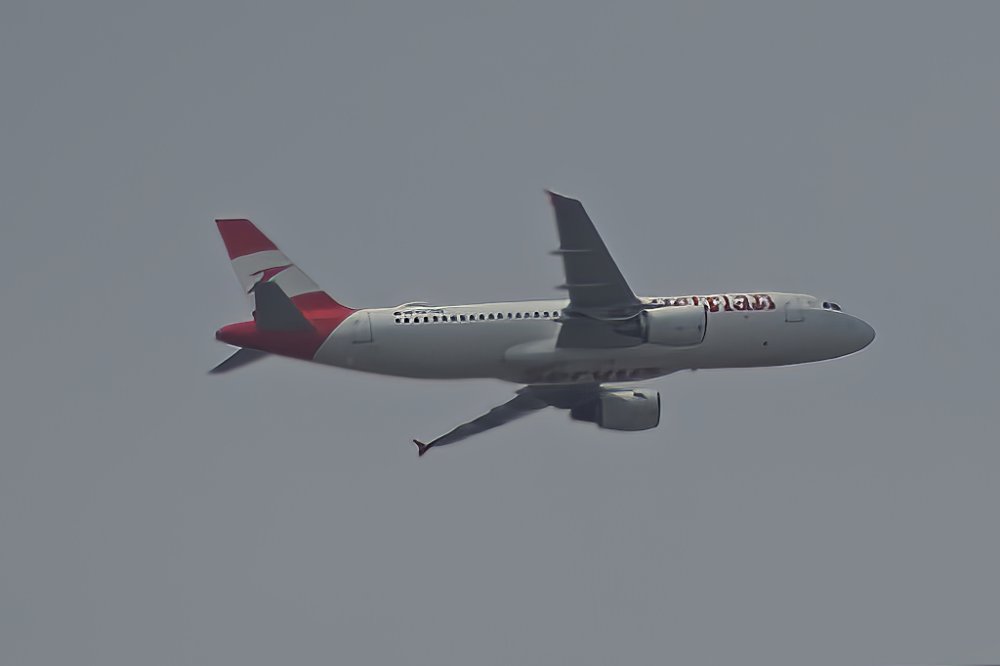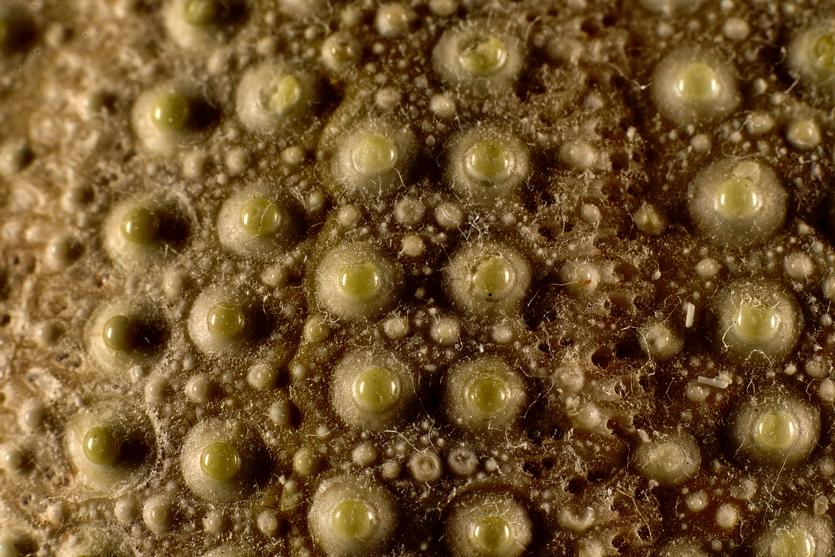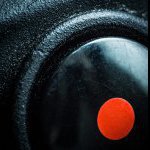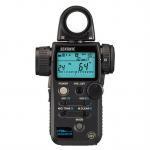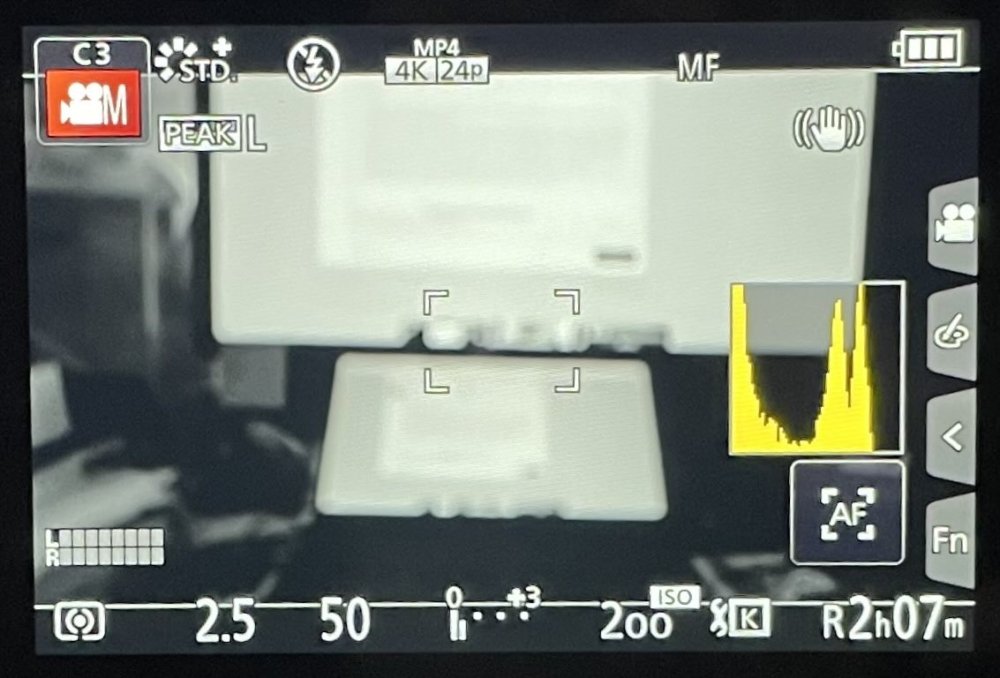All Activity
- Past hour
-
Hi and thank you! Yes I agree with all of what you say. I have been reading a lot that mirrorless cameras will be able to focus at any given aperture through the range unlike DSLR's which typically won't focus after f8. I can get round this at about f16 using the Sigma macro by engaging the lights on the MF-12 flashes to focus which is useful for skittish insects and invertebrates like bees. You spoke about diffraction which starts at around f11 - f13 and atmospheric "haze". Sure no matter what you do with sharpening things will still look pretty warped? This is a good example of *atmosphere* which I took a while back when I was trying to get used to the 200-500mm lens I have - the plane was shot at 450mm f/8: I don't have any experience with TC's but the closest thing I do have experience with is some Kenko extender tubes which when used with my Sigma gave me 1.4x magnification. The result was incredibly soft but I was able to recover it using a sharpening technique in GIMP by creating an overlay sharpening layer. The image below of the sea urchin shell was in fact shot with a 50mm f/1.8 that came from the Nikon FM originally that my parents bought before I was around. I completely agree that any lens with a TC will not have the same properties that a lens of a similar focal length will have. I'm just trying to think "light" and more affordable and practical. After all the Canon 1200mm for example is around 20k Euro. I realize that one won't be able to do everything but trying to find that balance between things is the key. If the 100-500mm is going to be sufficient and more practical then the 200-800mm and offer better image quality then that's going to be the solution for me. With a 1.4x TC it will offer a similar FoV to my D500/500mm f/5.6 combo, though the 200-800 without a TC will do the same thing. Of course that's where things start to get confusing for me a little of which direction to go in. Due to the light loss I also think it's better to use a TC with a much faster lens. Say a 400 f/2.8 and that way things won't be "so" degraded. When you say that I "haven't thought things through properly", I realize that I don't have much experience due to many factors. My only real wildlife experience is birds at various nature reserves I used to volunteer for which were pretty much the same thing and nothing very interesting and of course I had set times where I was there. Originally I started out wanting to do astrophotography which led me to my Pentax and as a result I have plenty of nightscape experience as that's pretty much all I had access (due to various reasons but most of all I live in the center of a big city and the surrounding area has no natural land around it as it's all built up with towns and more cities). The nearest place is around 5-8 hours drive away. Basically I'm really keen to get more into the other things and traveling off the beaten path away from civilization is going to help me achieve that. Once I have some experience in different environments and know what works for me I'll be fine 🙂
-
Canon R6II and R7 can record 4K for long hours without overheating, on my ex R7 the only time I see heating bar was during summer inside a clear tent which is like greenhouse on stereoid, even DJ's equipement got overheated, but R7 still only 4 bars out of 10 so pretty alright. R8 on the other hand will need a fan to go through summer outdoor for long 4K recording, for broll it was fine though, just you will see the the overheating bar pretty often in video. The 4k50P quality is really great, but now I got R5C the quality is even better, R5C is probably the closest to C70 in terms of noise performance in clog. I also got powershot V1, this one can record 4K for hours without overheating, but the bar did went to 5 at one stage, that was because the location is next to the heater. It is a nice C cam for wide and as a pocket cam. So my current setup is R5C/R8 and V1 for 3 cam and 3 60/40w cob lights with battery for wedding, with this setup I only need 1 pelican case, 1 backpack and 1 bag for tripod/stand. I used to have the R5 as well, after their latest firmware I haven't seen the overheating warning at all, even I shot 8K broll in outdoor summer. One thing with Canon is on the EOS side, only R5/R5C/EOS R can have hdmi out + internal recording + internal screen on, all other models the screen either go black if recording internally or have internal screen but can't record internally if you are connected to hdmi
-
I have the same policy in that a job isn't just a job as in all jobs are the same, but some do not fit into a standard box or coverage. In my genre of weddings, having everything take place in one single location is a completely different beast to; bride getting ready at X, groom at Y, ceremony at A, reception at B, which can make for HUGE logistical issues.
-
 kayasaman reacted to a post in a topic:
Nikon Z8 or Canon R5C to combine stills and video
kayasaman reacted to a post in a topic:
Nikon Z8 or Canon R5C to combine stills and video
- Today
-
Nikon Z8 or Canon R5C to combine stills and video
Ilkka Nissila replied to kayasaman's topic in Cameras
A 200-800 may be appropriate for wildlife documentary but adding TCs to an f/9 long lens to increase the size of long-distance subjects in the image is unlikely to be very useful. The aperture with a 2X will be f/18 and usually one starts to see significant blurring due to diffraction at f/13 and smaller. The best use of TCs is generally for increasing the magnification at close to intermediate distances where the image quality degradation is not significantly present. At long distances, especially when photographing over water, the temperature variations across layers of air, and humidity in the air, distorts and blurs the image and the longer your focal length, the more obvious it becomes. It's almost always better to be in a location which allows the wildlife to get closer and then shoot without a TC. I'm saying "almost" because there are situations where the light is good only when photographing subjects at longer distances and at closer distances the light is blocked by trees, hills etc. so in that case the longer focal length is needed to get the good light (but atmospherics still apply). In a video, the small aperture may not be a critical issue as the shutter speed is typically lower than in stills (e.g., 1/50s to 1/100 s when at 25 or 50 fps), bright sunlight giving f/16 1/100 s at ISO 100, for example. However, bright sunlight can lead to harsh shadows and in order it to look good, it should come at the right angle (which is usually low above the horizon). At low angles the sunlight is attenuated more by the longer distance of travel in the atmosphere. This generally improves the quality of light on the subject but the quantity is reduced. For stills, usually people want high sharpness in the details of the animal which can dictate a faster shutter speed such as 1/400 s or even 1/3200 s for birds-in-flight. A lot of the time there are clouds and in many cases the most atmospheric and beautiful light is before and after sunrise and sunset, and in those conditions you might be at ISO 25600 even with a f/5.6 lens. A lot of wildlife are the most active in these time windows. So the best times-of-day for photography might not be possible with an f/9 lens let alone f/18. Having the skills to pan effectively make it possible to do some shots successfully in lower light by allowing the subject to have controlled movement blur (sharp head, blurry wings, landscape blurred into trails) but this requires great skills. Even though some softness can be corrected with sharpening and noise-reduction algorithms, garbage-in-garbage-out still applies. A lens with a really small aperture means usually elevated ISO and increased noise. A 200-800+2X will have significantly reduced contrast over a native 1200 mm lens, for example, and if the noise is increased by the need to use fast shutter speeds and higher ISO, then the deciding parameter (contrast divided by noise) in terms of the clarity of subject details will be reduced from multiple factors: atmospherics, low-light-noise, reduced contrast due to use of imperfect optical system (with TC), all working to make it harder to get high-quality images. I'm not saying it's not a good idea to use a lens like the 200-800 for the stated purpose; especially for video with the camera+lens on a tripod and fluid head, it may be a very practical compromise for travel-based wildlife photography, but one should have realistic expectations and when people talk about 2X use to magnify long-distance subjects with a small-aperture lens, then I can't really but feel that the OP hasn't thought it out through and might not have a lot of experience with very long lenses. I think a lens like the 100-500 is much more travel-friendly and might give a greater pleasure of the experience but it also requires you to be closer to the wildlife or select subjects that work with that range. It might be a good idea to take both the 100-500 and 200-800 and use the 200-800 when you feel up to it (traveling can be exhausting) and when photographing subjects which require the reach while the 100-500 can be carried along more casually and with other lenses. For video I think fluid head and tripod give the best results when it comes to these focal lengths, but a fluid head won't easily adopt to regular photography with shorter focal lengths such as landscape in low light. A 1600 mm lens is going to be tough to keep steady no matter what gear is used. -
 kye reacted to a post in a topic:
How do you do video mode on the gx80?
kye reacted to a post in a topic:
How do you do video mode on the gx80?
-
Interesting. Though for narrative, there are lots of long breaks. There are breaks during the b-roll I shoot too, but I'm often in the hot sun. I'm kind of tempted to give the R8 a try. Josh Sattin's videos suggest that it can roll for over two hours continuously in 24P. That goes down significantly in 60P, but I tend to shoot about 70% of my b-roll in 24P. I've been trying to do the same. Four years ago, I was lugging around a pair of 575w HMIs(!). Now I have a rule that if a client wants more than what I can fit on my cart, they need to budget for my gaffer too. But getting hired for photo + video is always a problem for me because it means multiple bodies, multiple lenses, etc. I've held off because I don't think the quality is really there, but at this point I am willing to make some sacrifices.
-
GX85 here too, just arrived from street back to my Lisbon place, 5 minutes ago, with one in hands... as casual shooter for covering this: https://www.portugal.com/activities-experiences/the-ultimate-guide-to-the-biggest-party-in-lisbon-santos-populares-and-santo-antonio-2024-edition/ + FX30 with my new Sigma 16-300mm f/3.5-6.7 attached to 1.5x Clear Image Zoom and no complaints on ISO as far as low light concerns under street bulbs by night, go figure for 4K 25p always under ISO 1000; + Osmo Pocket 3 which didn't leave the case this time and it's one of my favs; + Insta360 One X2 in my shirt pocket, the same, despite its terrible low light/night shooting performance... Its small form factor with the cheap kit 12-32mm f/3.5-5.6 lens makes it unique. Didn't even feel the need to use my Osmo, can you imagine? And Panasonic batteries last and last... A single battery for all night long, two batteries for Sony. Follow @kye's entry for everything else, it's for free and you have there more with him than whoever else here or anywhere out there ;- )
-
 Emanuel reacted to a post in a topic:
How do you do video mode on the gx80?
Emanuel reacted to a post in a topic:
How do you do video mode on the gx80?
-
 Emanuel reacted to a post in a topic:
How do you do video mode on the gx80?
Emanuel reacted to a post in a topic:
How do you do video mode on the gx80?
-
2 years ago, I bought a cheap cart off Amazon and use that to lighten the load. 1 year ago, I revised some of my kit to get the weight down. This year, I revised it even further. And guess what is happening next year? Yep, reducing it again. Providing you can still do what you need to do without compromise, or at least compromise that you can live with, less is more. That tripod that is ‘the best’, well maybe it is, but can that lighter alternative do the same job? Ditto that body, that lens, that light… In less than 2 years, I reduced both my stills and video cameras, in hand weight by about half with changes of body, lenses and accessories. But Canon, no idea, but I would suspect none of the recent one’s do. At least not under normal circumstances.
-
For B-roll and photos, I'm not sure that any modern Canon is in any danger of overheating. I've used the original R5 as b camera for narrative, rolling every second alongside the C70 I was using at the time. It never even showed any signs of distress. That was doing 8K raw. If you use the 4K standard mode, it'll be even less of a problem. It would definitely not be a camera that I'd choose for rolling long takes in 8K, but most of its reputation for overheating is Canon's fault for having such stupid firmware when the camera was released.
-
 maxJ4380 reacted to a post in a topic:
How do you do video mode on the gx80?
maxJ4380 reacted to a post in a topic:
How do you do video mode on the gx80?
-
I forgot that for exposure I also use Zebras to show what is clipped. To expand on my exposure strategy, I try to expose to the right (ETTR) but making sure that the only things being clipped are things I'm ok with being clipped. If the DR of the scene is significant, you have a decent ability to bring up the image in post, so underexposing high-DR scenes can be a good strategy. This might sound silly, but when shooting in available light, having the sun clipped is just fine, at night having lights clipped is fine, etc. The GX85 image can always be brought up in post, but you can't bring it down if something is clipped. I have a good thread on testing the GX85 here. Here is an example of the torture test I did with exposure and WB. These are the test images SOOC: Note that these are horrifically wrong in exposure and WB. This is a torture test after all! After correction: Small adjustments in exposure or WB are completely possible in post.
-
Congratulations on your purchase! I have the GX85, which apparently is very similar to the GX80, but you might notice small differences perhaps, so I guess maybe not everything I say below will apply to you. I shoot run-n-gun fast-paced stuff so probably very similar to the challenges you are facing. Here is how I setup and use my GX85. This is the screen, showing lots of handy info. Going from top right, here's what I do. I use the custom modes to store different configurations. In this case, it's in C3 and that is fully-manual. You can't set the mode (ie, PASM) once you've created the custom mode, you need to create the custom mode with the right PASM mode. To do this you choose the right PASM mode that you want to use using the top dial, then save that configuration to the custom mode with the "Cust Set Mem" function, and then you can change to that custom mode using the top dial and then further customise that custom mode. I use the standard profile. I've done lots of testing and the standard profile is the most flexible if you're going to further tweak the colours in post. If not, feel free to choose whatever mode you like. I use focus peaking and have set it to a custom button to switch between the high and low sensitivities. I use this in combination with making the display black and white so the peaking is more visible. No flash. 4k 24p. I've setup back-button focus. This means the camera is in MF mode, but I have configured the AE/AF Lock button to enable AF while you hold it down. The way I shoot with an AF lens is to push in that button, see what it focuses on (which is obvious because of the peaking) and then I release the button, then I hit record. This means that the focus doesn't change during the shot. This means the focus isn't hunting around all over the place, it's not focusing on the persons hand or on the person that walks in between you and your subject, it doesn't focus on the background if they move in frame, etc. It won't follow them if their focus distance changes, which can ruin some shots, but my experience is that AF jumping around ruins more shots than the subject moving does. Plus, if the subject moves slightly the aesthetic of them being slightly out of focus for a bit is far less objectionable than the AF jumping around for no reason. IBIS is enabled. IBIS gets a lot of criticism but if you stand still and hold the camera as still as you can then the IBIS will simply help you to be more stable and the jitters and jello effects can be reduced entirely. Shooting in fast situations means that tripods and monopods are often too slow and cumbersome, but if you try and emulate a tripod by using IBIS (or better yet, combine IBIS with OIS from a stabilised lens) then you can easily get very stable hand-held shots that with a tiny bit of stabilisation in post can be perfectly locked off without and artefacts at all. I set my AF to be in the middle of the frame, which combined with back-button focus is really fast and usable. Even if you do the photography thing of putting the subject in the middle, doing AF, then setting up your composition, it all works perfectly. I expose using the histogram. Exposure is a big topic, but I have done extensive testing and have concluded the following. In the Standard profile, you can do quite significant changes to exposure and WB in-post, even with simple tools, if you keep the exposure in the middle. The limits are that if something is clipped then it's clipped (of course!) and if it's in the noise floor then it's also gone. Apart from that, you have lots of flexibility. Audio meters show the levels. I use auto-levelling, but audio isn't really a big part of what I do and if you only shoot short clips like I do then any variation in level that it introduces isn't going to be much over a short clip, and it saves more shots by adjusting itself than it ruins. You can always set it to manual if you like. Aperture and shutter speed. I always use 1/50s when I shoot manually. Adjust as you see fit, depending on if you want to expose with shutter speed and not use a vND. Personally, I find that not having the exposure going up and down randomly is a good thing, and adjusting the shutter speed with the dial is just as painful as adjusting a vND. If you're using a manual lens then you can just set the camera once, and then all your controls are on the lens (vND, aperture, focus) so that's a really nice way of working. Lighting doesn't change that much, especially in daytime exteriors, so it's not a big deal. I've swapped to a high quality 2-5 stop vND and it's got enough range for daytime if you're willing to stop down a bit during the brightest bits. In busy outdoor situations you don't want to blur the crap out of the background anyway, so stopping down is actually more relevant than isolating subjects to the point where the shot could have been taken anywhere. The exposure meter is sometimes useful, but it's dumb. For example if you're shooting a person and a white van drives past in the background it thinks that you should change the exposure. Obviously that's dumb because you're shooting the person and not the van. ISO200 = base ISO. This camera doesn't have great high-ISO, so stick to base ISO when you can. WB = 5600K. I shoot exclusively in this mode. After using auto-WB for many years, I've come to realise that while different lights appear different with a fixed WB, things look like what they are. During the day things look right, sunset looks very warm but looks right, fluorescent lights look green but that also looks right. I rarely change WB in post now, and if I do it's to even out and tiny variations between shots just to polish the final video. My final piece of advice is to get a native zoom lens. Either the 12-35mm F2.8 or 14-140mm F3.5-5.6 are great, but the 14-42mm kit lens is also very capable and not to be underestimated. In complex situations you are often restricted in where you can move to, and will often want to zoom in to control your compositions. Having AF speeds up your shooting substantially, especially when you might only have seconds to get rolling when you see a moment about to happen. Happy to discuss further if you have questions, and I recommend searching around here, I've been posting lots of stuff over the years, including lots of tests and sharing what I have learned. Also happy to talk about strategies for shooting coverage, etc. Once you buy the gear and learn the settings you can make a video. It's what's in front of the camera and what's behind the camera that determine how good that video will be.
-
Other than the pricey R5C, of course. Also, I don't think my EOS-R has ever overheated. But it has a significant crop. Maybe the 1D-C, 1D-X ii or iii? I don't care about 30-min recording time limits. This would only be for b-roll and photos. Asking because I almost blacked out during a paid video + photo shoot out in the sun today. When I came home and weighed the gear I was hauling around (rigged up C70, EOS-R, tripod, lenses, batteries), it was 32lbs. I can't put this off anymore. It's time for a hybrid. And yes, I am too invested in Canon to consider any mount other than RF or EF.
- Yesterday
-
Camera prices – Have the Japanese taken leave of their senses?
ntblowz replied to Andrew Reid's topic in Cameras
Yeah, look at FX2, rolling shutter, s35 crop doesn't matter as it is a "cinema camera" not a generic camera that does video 🤓 But Fuji is really doing well on upscaling their perceived market perception, it is trying to be the Japanese Leica. -
 Juank reacted to a post in a topic:
Nikon Z8 or Canon R5C to combine stills and video
Juank reacted to a post in a topic:
Nikon Z8 or Canon R5C to combine stills and video
-
 Juank reacted to a post in a topic:
Nikon Z8 or Canon R5C to combine stills and video
Juank reacted to a post in a topic:
Nikon Z8 or Canon R5C to combine stills and video
-
When I had the GX85 I'd generally set the shutter and aperture and then leave ISO on auto when I was "running and gunning". I'd keep the shutter to the 180 degree rule, leaving only the aperture for me to adjust. Usually the camera did a good job adjusting the ISO. When it would occasionally get too noisy I'd add a little noise reduction in post and it'd be fine. I really only had that problem though when using zooms; the 1.7 primes (and even the 14.5mm 2.5) generally let enough light in that it wasn't a problem most of the time. Great camera. I regret selling mine, though not having a mic input was always a bummer. If the S9 weren't out there I'd probably have bought another one, but I'll probably end up getting the S9 when the prices comes down even more.
-
 newfoundmass reacted to a post in a topic:
How do you do video mode on the gx80?
newfoundmass reacted to a post in a topic:
How do you do video mode on the gx80?
-
 eatstoomuchjam reacted to a post in a topic:
Nikon Z8 or Canon R5C to combine stills and video
eatstoomuchjam reacted to a post in a topic:
Nikon Z8 or Canon R5C to combine stills and video
-
Haha... maybe things are a little different for me as I have both ADHD and ASD so my brain sees details rather then summaries. Lot's of Macro photographers tend to be on the Autism Spectrum for this reason. Probably why so many people got confused with what I'm trying to achieve, as sadly communication is different too as there are subtleties. I'm kind of leaning towards the R5C at this point but a little lost over the lens lineup. I wrote above what my thoughts are as I want to cover my bases and not leave anything out since at this point I don't have any experience as I've never done anything like this before. So what focal lengths will I need? Time will tell basically..... Sure for stills currently based on what is available where I live; I use the 15-30mm Pentax and 150mm Irix, the 200-500 f5.6 Nikkor, and Sigma 105mm - though prior to the 15-30mm I used the Samyang 24mm F1.4 which got crazy internal reflections at brilliant points of light. Just checking the Canon website I can see a CN-18-80mm and 70-200mm which probably would cover me on all bases but sadly these are Super 35mm E-mount lenses, so not even full frame. Something like the RF 24-240mm would be ideal as a one-stop-shop for a lens but I made that mistake with my Nikon already in the 18-300mm DX. It's awful and heavily compromised for my liking. Good for "snaps" though, great recon lens :-S I guess I made my decision on camera body, now for the lenses....??
-
When I had the camera, I basically just left it on A. Even when shooting on a Mediterranean island in the height of summer. I find that when documenting real life stuff, the 180 shutter rule is a bit more maliable than when shooting for narrative or performance. In fact, I would go so far as to say for a protest, having a very fast shutter speed can even be advantageous as things move so quickly. You can pull crisp stills from your footage and any noticeable choppyness in the shots will emphasis the electric feeling of actually being there. With A you can just focus on framing and let the camera do the exposing. It will play with ISO and shutter speed, but keep you aperture locked to whatever you set it.
-
Nikon Z8 or Canon R5C to combine stills and video
eatstoomuchjam replied to kayasaman's topic in Cameras
Right. These days, you can pick one of Sony, Canon, Nikon, and Panasonic (and arguably, Fuji) and have everything you need. Beyond that, you're really just micro-optimizing in ways that are less meaningful than you might think. Most of them just take turns buying the same Sony sensors anyway. Each has some things that they do better than the others - and if you change your mind later about the things that are important, you could certainly regret it. But at some point, obsession over small differences between systems will lead to making a YouTube channel with a theme song about "All I want is the perfect camera, all I want is the perfect ca-me-ra..." (FWIW, Kasey is borderline convinced for the time being that his R5 II is the closest thing to a perfect camera and he also likes taking photo/videos of birds/squirrels in his local area). Am I actually suggesting that someone watch Camera Conspiracies for actual information about buying cameras for their use case? I can't believe I'm saying this, but... maybe I am. -
Makes perfect sense, especially when traveling
-
It's a bit more complicated then just getting the 1.4x TC for my D500. Like I wrote above, I want to get a new camera system to consolidate my current camera systems and add video. So it needs to cover Landscape, Nightscapes, Astrophotography (lightly as I'll most likely get a Moravian Instruments actively cooled monocam for dedicated astro work), Wildlife/Action, and Macro. I'm slowly starting to plan traveling around the world, so I'm looking at all kinds of things that I will need and to make my life easier. I don't want to have to take 3 different camera systems with me so I'm looking for an all in one that will combine stills and video. Right now there's a lot of research even on SUV or Truck and roof top tent vs camper trailer, GPS systems, 2-way radios etc.... I know MFT would be lighter and get more reach, I have looked at the Lumix GH6 but at the sacrifice of low light capability which does not work for me. I bought the Pentax K1 II specifically for it's AstroTracer functionality which got me taking images of nebula and galaxies. More examples: https://photos.app.goo.gl/gSPeWz5gh9LK8qES6 - the Red Kite towards the bottom was an amazing catch! Cropped of course - all using the Nikon D500 https://photos.app.goo.gl/LkTeMnrKqxkoowAi7 - Pentax K1 II nightscapes The Andromeda Galaxy: https://photos.app.goo.gl/hBhgyAQgPJuAqHBRA This was a precursor, a trip up to Scotland last year - it's a 3 part playlist:
-
Nikon Z8 or Canon R5C to combine stills and video
eatstoomuchjam replied to kayasaman's topic in Cameras
What is your planned presentation/use for these photos? One of the not-so-secret secrets of wildlife photography is that the photos are rarely presented as-framed in camera. The D500 has 20 megapixels which gives you a bit of room to crop in if your presentation is going to be social media or embedded in a 4k video. The Z8 and R5C are both 45 megapixel sensors - so you'll be able to crop in even more than on the D500. An 800mm lens won't be meaningfully different in FOV on FF than your 500mm was on APS-C, though. You mention the built-in TC on the 200-800, but there's nothing stopping you from going out and getting a 1.4x TC for the lens that you have now... or a 2x, but on modern very high resolution sensors, I've never seen a 2x TC that looked better than just cropping. If you don't want to crop or if you want to shoot 4K for presentation at 4K, you really should be looking at APS-C or M43 cameras. Bonus, you can also still use a TC. -
This is an example of how far away a 500mm is for my on the D500: https://photos.app.goo.gl/TUS5QRjQzKWX5btr6 Would have loved to get larger shots of the Terns on the raft or the Green Speckled Woodpecker. All were shot handheld. I think the 200-800mm with a 2x TC would have been a better choice there but maybe on a tripod with gimbal head?
-
I think IBIS can be overcome with a gimbal like the RS4 Pro from DJI. As for the battery life, one of the videos above suggested you could get around 5 days using a battery pack from Amazon. About grading, I just started to learn the different methods for my drone footage taken last year. My first attempts were pretty bad using first Shotcut then later Davinci Resolve Studio. Can't remember if I popped this up already - apologies as my head is all over the place right now!! but it definitely is better balanced and has no weird artifacts like Magenta or Cyan blobs in the sky or that crazy over saturated blue hue that showed up in the clouds due to the white balance being off in camera: https://drive.google.com/file/d/1VewQSP0gCb2MICn8ZJEvg9QnNfxJm325/view?usp=drive_link - it was my first time using the drone so I was just getting used to it.
-
Hi, sorry for the confusion. I plan to use this system in place of my Pentax K1 II and Nikon D500. I am slowly planning traveling the world in a 4x4 and doing Overlanding/travel videos as well as natural world/nature documentaries. Locally I find the APSC combination with the 500mm lens is slightly short because there is no large fauna where I am, only small birds like the Eurasian Robin, Tits, and Finches. To start with I do not plan on using the articulating screen at 750mm lol 🙂 I actually would need to use it with something like a 50mm f1.2 around a campfire or in the car or just generally vlogging My idea is to use these lenses while on a multi day hike, again the articulating screen would come in handy when filming myself and another person, obviously not restricted to: * 15-35mm f2.8 * One of 24-70 f2.8, 28-105mm f2.8, 24-105 f4 * One of the 70-200 f2.8 or f4 * 100mm macro The above would let me cover all basis when I don't know the area or what to expect and still be light enough to not kill me after a 5 hour hike. I am also interested in the 200-800 for wildlife especially using the TC's for far away or small subjects but it would be used on shorter walks where the weight won't be such an issue. Last night I even checked the NiSi Aureus range of lenses at T1.5 which are interesting but if I can get by with the Canon RF lenses mentioned above then there would be no need for them. I definitely would need to be shooting CLog or other color gradable format for video. Not sure if the R5II has that? The fan is much welcome too as if I'm outside and it's say 45 degC I don't want the camera overheating if leaving the camera running (using a battery pack of course as I think you get 30mins out of the R5C internal battery) To summarize basically I'm trying to build an all in one setup that will cover all my basis and be a lot less to take along then say 3 different systems.
-
Using it as an example furthers the false narrative being pushed by the dipshit president and right-wing news outlets. A better example might be "the large-scale protests planned all across the country this weekend." As far as your other questions, as long as you're using a 180 shutter, once you become somewhat accustomed to the camera, your exposure controls are limited to ISO, aperture, and ND. In you use a variable ND, in many situations, you'll be able to just set an ISO/aperture and dial in the exposure with the ND. Otherwise, if you're less familiar with the camera and those settings, you might just use "S" mode and set the shutter to 180, put on an ND8 or ND16 if you plan to be outdoors, and just let the camera work out the aperture and ISO for you.
-
Nikon Z8 or Canon R5C to combine stills and video
eatstoomuchjam replied to kayasaman's topic in Cameras
That all depends - if you have a 61 megapixel FF sensor, the only real benefit to it is the ability to crop in. Much heavier glass is also subjective - I kind of love the Canon RF 800mm f/11. It's obviously very limiting to have a fixed f/11 aperture, but the lens is otherwise a decent performer and not that different from using a 400mm lens at f/5.6 on M43. I would say, though, that stabilization is huge at such long focal lengths - and that might be a reason to consider a Panasonic body and Panasonic lens since their hybrid IS is by far the best. I don't have much problem getting sharp photos on the R5 with the 800/11 since whatever mix of IS is used works pretty well - but I also only use it in fairly bright areas and I don't mind bumping up the ISO a little bit.

